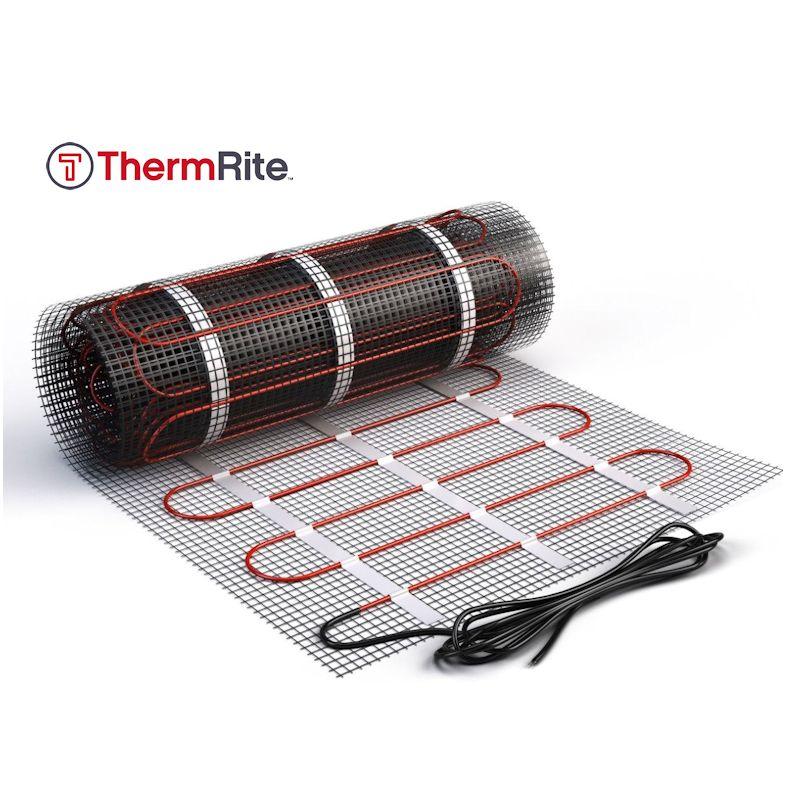In large spaces with open floor plans, finding an efficient heating solution can be a challenge. Traditional heating systems often struggle to distribute heat evenly across expansive areas, resulting in temperature inconsistencies and wasted energy. However, underfloor heating offers a compelling solution for large spaces. By utilising radiant heat, underfloor heating ensures even heat distribution, eliminates cold spots, and maximises energy efficiency. In this article, we will delve into the benefits and considerations of underfloor heating in large spaces, providing valuable insights and practical tips for achieving optimal comfort and efficiency.
Efficient Heat Distribution
One of the significant advantages of underfloor heating in large spaces is its ability to provide efficient heat distribution. Traditional heating systems, such as radiators or forced-air systems, may struggle to evenly heat expansive areas with high ceilings and open layouts. In contrast, underfloor heating radiates heat from the floor upward, ensuring a uniform distribution of warmth throughout the space. This eliminates cold spots and ensures that every corner of the room receives adequate heating. By maximising heat distribution, underfloor heating creates a consistently comfortable environment in even the largest of spaces.
Energy Efficiency
Underfloor heating offers notable energy efficiency benefits for large spaces. Radiant heat operates at lower temperatures compared to conventional heating systems, resulting in reduced energy consumption. The heat emitted from the floor rises gradually, minimising heat loss and allowing the space to retain warmth more efficiently. Additionally, underfloor heating allows for zoning, which enables precise temperature control in different areas of the large space. By independently regulating heating in specific zones, energy waste is minimised, and occupants can customise their comfort levels. With underfloor heating, large spaces can achieve optimal heating efficiency, reducing energy costs and environmental impact.
Design Flexibility
Underfloor heating offers tremendous design flexibility for large spaces with open floor plans. Unlike traditional heating systems that require bulky radiators or ductwork, underfloor heating remains hidden beneath the floor surface. This frees up valuable wall and floor space, allowing for greater design freedom and more efficient use of the area. Furniture placement and interior layout choices are no longer dictated by the location of heating elements. With underfloor heating, large spaces can maintain a clean, uncluttered aesthetic while still providing optimal comfort and warmth.
Improved Air Quality
Underfloor heating can contribute to improved air quality in large spaces. Unlike forced-air systems that rely on air movement, underfloor heating does not circulate dust, allergens, or pollutants. This reduced circulation of particles helps minimise airborne allergens and creates a healthier indoor environment. Large spaces, especially those with high foot traffic, can benefit from the cleaner air provided by underfloor heating, promoting a healthier living and working environment for occupants.
Noise Reduction
Noise reduction is an important consideration for large spaces with open floor plans, as ambient noise can easily reverberate. Underfloor heating operates silently, without the need for fans or blowers that generate noise. This creates a quieter and more peaceful environment, allowing occupants to focus, work, and engage in conversations without distractions. The absence of mechanical components reduces overall noise levels, enhancing the comfort and functionality of the large space.
Installation Considerations
When considering underfloor heating for large spaces, professional installation is crucial. Proper installation ensures optimal performance and efficiency. The installation process typically involves laying the heating elements beneath the floor surface, which may require modifications to the existing flooring. It is important to consult with a qualified underfloor heating specialist who can assess the specific requirements of the large space and provide guidance on the appropriate heating system and installation method.
Zoning and Temperature Control
Zoning is a key feature of underfloor heating that is particularly beneficial in large spaces. By dividing the area into separate zones, temperature control can be customised based on the specific heating requirements of each zone. This allows occupants to adjust the temperature according to their preferences and ensures that energy is directed where it is needed most. Zoning also enables different areas of the large space to be heated independently, optimising comfort and energy efficiency.
Integration with Smart Home Systems
Underfloor heating can be integrated with smart home systems, adding an additional layer of convenience and energy management. Smart thermostats and heating controls allow for remote access and precise temperature adjustments, even in large spaces. Occupants can monitor and manage the heating system from their smartphones or other connected devices, ensuring optimal comfort and energy efficiency. Integration with smart home systems also enables the scheduling of heating cycles based on occupancy patterns, helping to reduce energy waste.
Underfloor heating offers efficient heating solutions for large spaces with open floor plans. By providing even heat distribution, maximising energy efficiency, offering design flexibility, and contributing to improved air quality and noise reduction, underfloor heating creates a comfortable and inviting environment. Considerations such as professional installation, zoning, integration with smart home systems, and regular maintenance ensure the optimal performance and longevity of the system. With underfloor heating, large spaces can achieve optimal comfort, energy efficiency, and occupant satisfaction, making them more functional and enjoyable for various purposes.



